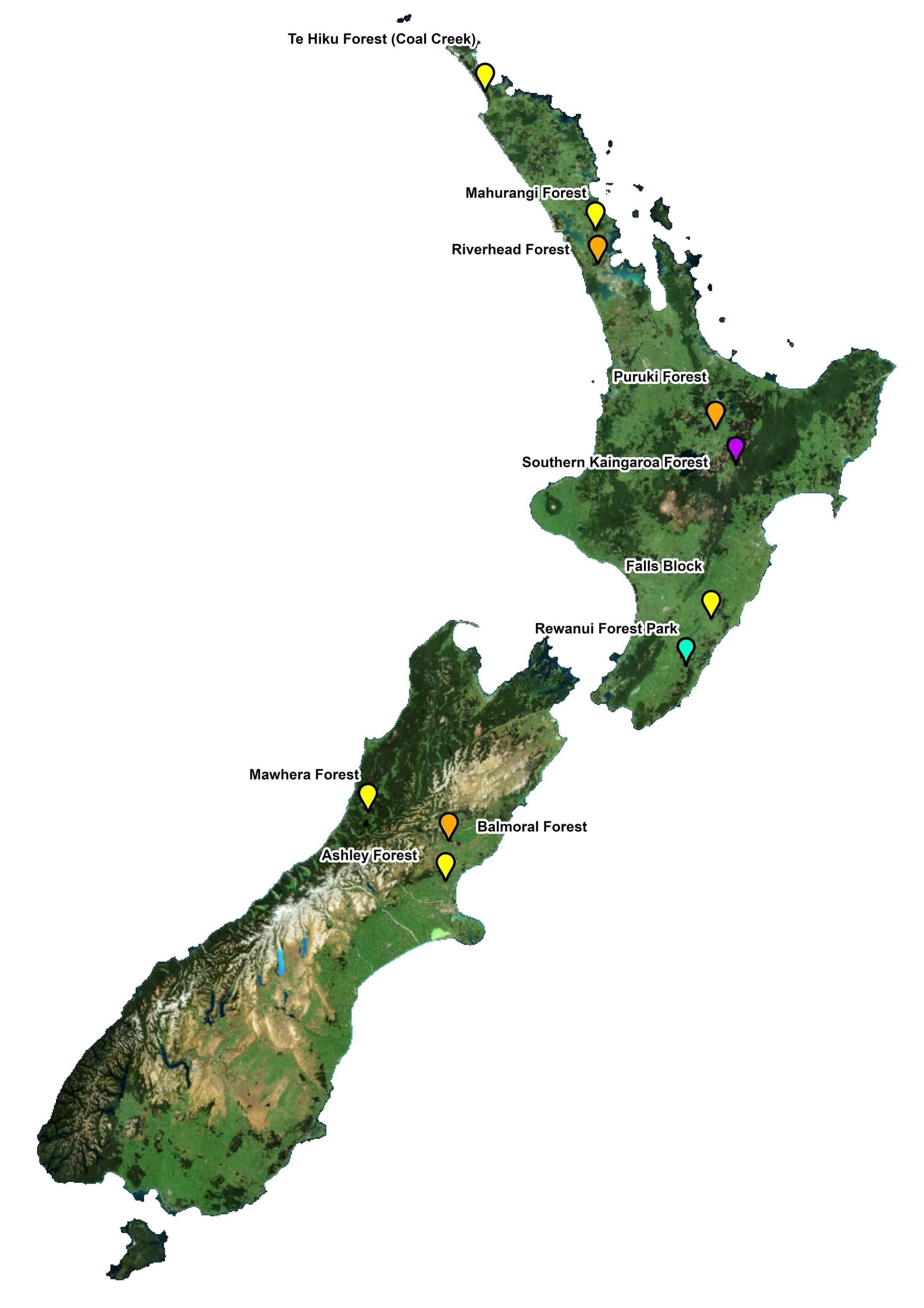Can we create a radically improved forest hydrology model that addresses national water-related issues?
Research aims
The programme aims to create a biophysical model of forest hydrology that accurately predicts water storage and release for entire catchments, while also providing data on changes in water quality over time.
This programme will:
Identify key forest hydrological processes by combining monitoring of soil-plant-atmosphere interactions with a range of targeted ground-based research over the long-term.
Develop and use remote-sensing tools, to collect data that spans catchments and planted forests and can be linked to key forest hydrological processes.
Create a model that predicts hydrological flow across a range of NZ planted forests.
Create an decision making framework that provides the necessary information to optimise water use in planted forests.
Impact Areas (IAs)
Quantifying water processes within a forested catchment
By 2024, we will have identified and quantified the key above- and below-ground processes that govern water quantity and nutrient attenuation and transport within planted forested catchments. This new knowledge will provide the international scientific community with a fundamentally new understanding of the key processes governing planted-forest hydrology. The mechanistic processes will provide the key algorithms for our forest hydrology model to accurately simulate water quantity and nutrient attenuation in planted forests throughout New Zealand.
Spatially quantify forest water flux and storage at different scales with novel remote-sensing technology
By 2024, we will have developed a rapid, low cost, novel methodology to identify and quantify key hydrological processes spatially across a planted forest. This technology will enable:
- Accurate scaling of point measurements to the planted forest catchment scale;
- Accurate 3-dimensional modelling of key hydrological processes spatially across a forested catchment;
- Accurate modelling of water quantity and quality fluxes across multiple catchments and scales to the forest level.
These outputs will provide the key parameters and algorithms for the planted forest hydrology model to accurately calibrate and simulate water quantity and quality fluxes spatially in planted forests throughout New Zealand.
Develop and apply an assessment framework for the environmental, socioeconomic, and cultural impacts of planted forests on downstream water ecosystem services
By the end of 2024, we will have assessed the environmental, socioeconomic, and cultural impacts of upstream planted forests on downstream water ecosystem services. This will enable:
- Development of effective and efficient land-use regulations to promote positive impacts and mitigate negative impacts of planted forests on downstream water availability;
- Design of effective and efficient policy incentives (e.g., water compensation of planted forest owners using best forest practices) to promote the adoption of optimal-water-use forestry regimes.
Given the policy focus of this statement, our findings will be shared directly with key local stakeholders, policymakers, and relevant government agencies.
Need for new research
Understanding how water flows through the land, including planted forests is essential to make the best use of land and water while maintaining environmental health. New research is needed to replace outdated models and understand the complex processes of how water is distributed, used and circulated in planted forested catchments.
Implementation pathway

A fundamentally new approach
We propose an approach that quantifies key forest hydrological processes to provide world-leading water dynamics across a range of environments. Data collected using state-of-the-art technologies will be integrated with novel assessment methodologies then used to construct a new biophysical model that accurately simulates forest water-dynamics spatially as a Forest Digital Twin for a range of environments. The model will then be incorporated into a decision-making framework to evaluate the critical economic, environmental, and cultural impacts of existing/new planted forests on water resources.
Research sites

We will establish six monitoring sites in forested catchments across New Zealand, plus leverage an existing tree ecophysiology sensor network. Each monitoring site will be organised into clusters, containing primary, secondary and tertiary sites, covering planted forest areas with a range of species/genotypes, catchment positions, soils/geology, hydrology and climate.




